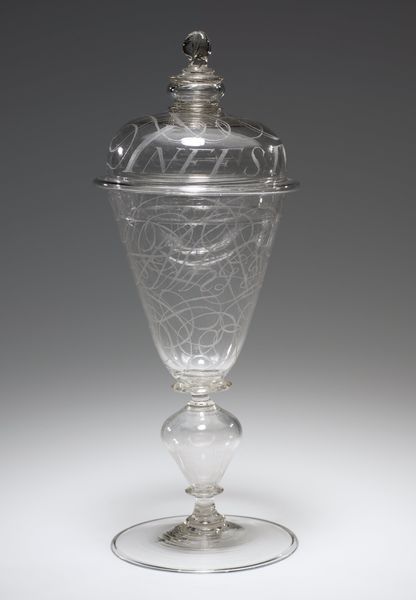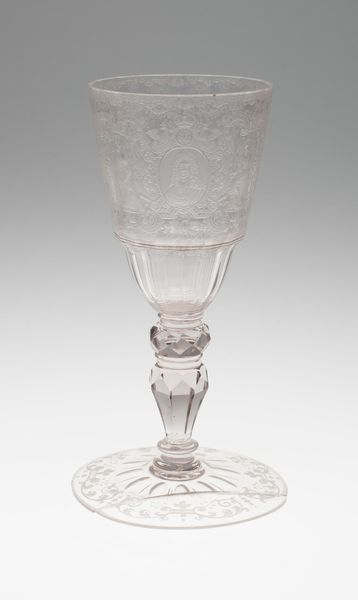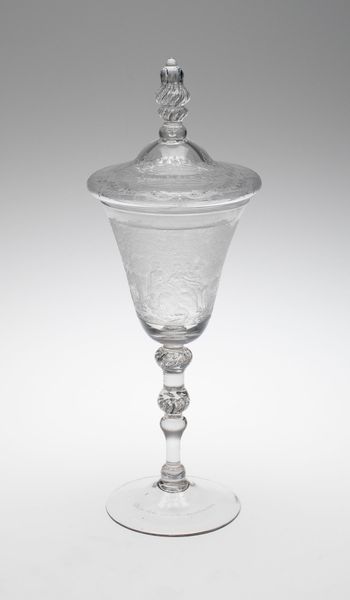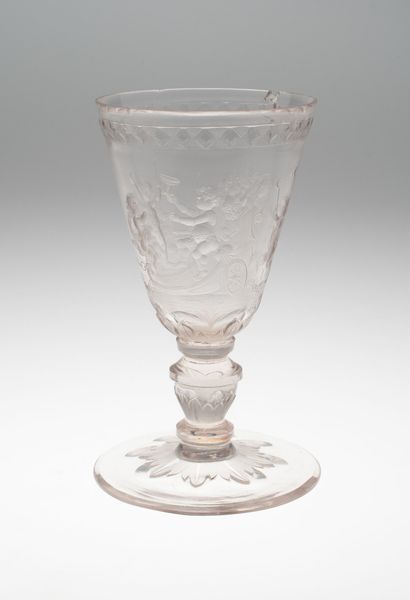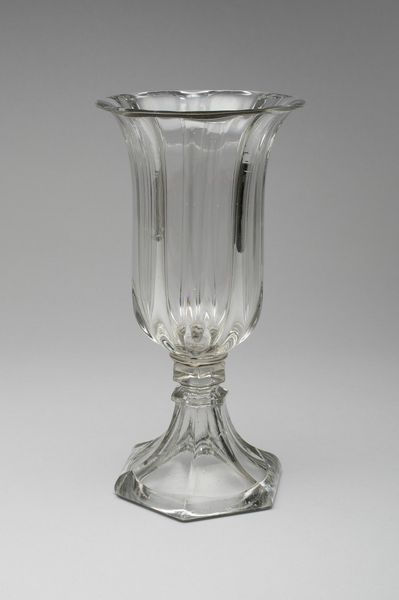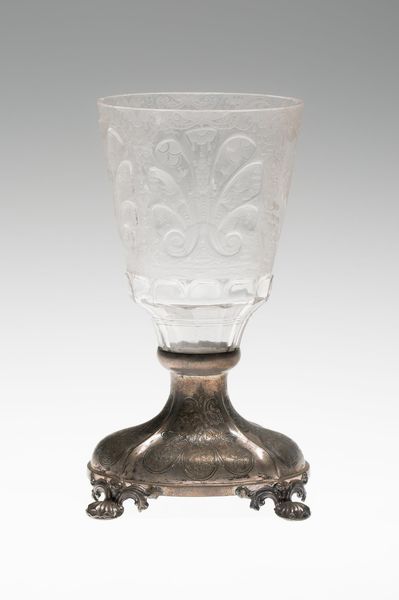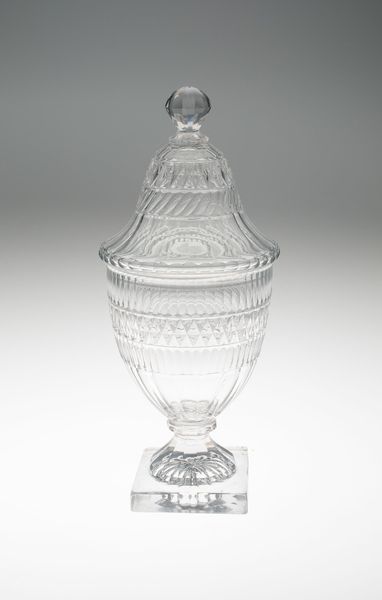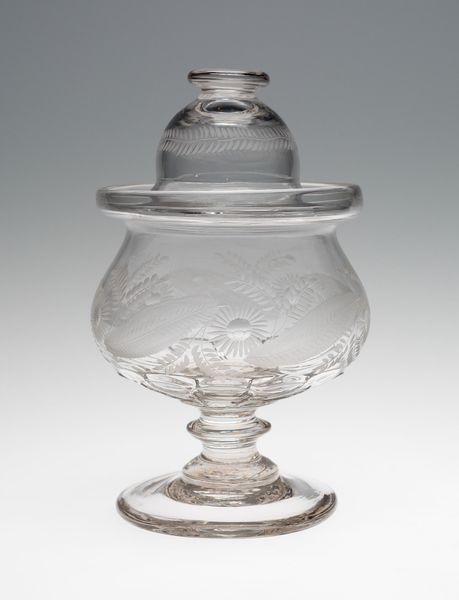
glass, ivory
#
glass
#
decorative-art
#
ivory
#
rococo
Dimensions: 29.2 × 8.3 cm (11 1/2 × 3 1/4 in.)
Copyright: Public Domain
Curator: Here we have a “Goblet with Cover,” made around 1750. It’s currently located here at The Art Institute of Chicago and believed to be the work of Christopher Gottfried Schneider. Editor: Wow, there's something so delicate about this piece. The near-transparency of the glass, combined with those sharp, precise cuts…it feels both ethereal and meticulously crafted. Curator: Precisely. What you’re sensing is a culmination of the Rococo aesthetic and advanced glass-making techniques of the mid-18th century. Consider the cultural context. Objects like these reflected the refined tastes and the display culture of the European elite. They were a potent symbol of wealth and status, designed for sophisticated display during dining or social events. Editor: Thinking about the process...the materials. That perfectly clear glass and the ivory accents suggest intense, skilled labor, probably a collaborative workshop of artists and artisans. Someone really knew their materials. Were objects like this typically imported or were local resources commonly used at this time? Curator: Generally, it was a blend. The very best raw materials for high-end glass were carefully sourced and traded across considerable distances, contributing to the value placed on these luxurious commodities, although regional workshops flourished depending on local tastes and socio-political climate. Editor: It makes you think about the hands that shaped it. Someone transformed molten glass and raw ivory into this exquisite object that’s meant, essentially, to be an ephemeral experience. What would it have held, do you think? Something similarly fleeting and precious, maybe a flavored cordial? Curator: Possibly. Or maybe it was strictly ornamental, a conversation piece more than a functional container. We know that decorative arts held great significance in establishing social identities, and pieces like this were crucial to the visual performance of class and culture in court and elite circles. Editor: It’s humbling, isn’t it? All that specialized knowledge, that physical work, dedicated to this single object that connects us to the past through material ingenuity. Curator: Absolutely. Objects like these are a lens into past lives. Studying these objects helps us reveal aspects about the history of production and class, but also about how social display created hierarchies that persist today.
Comments
No comments
Be the first to comment and join the conversation on the ultimate creative platform.

